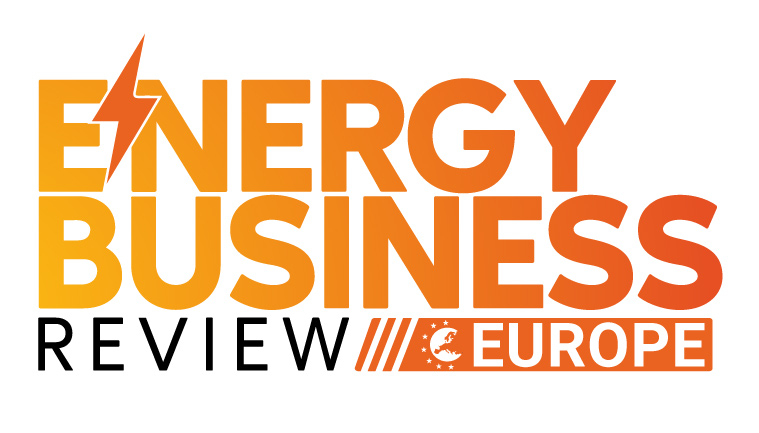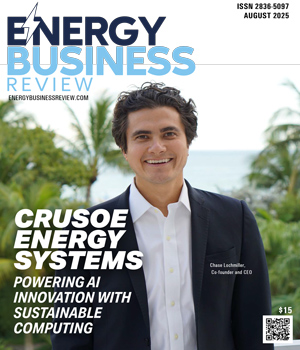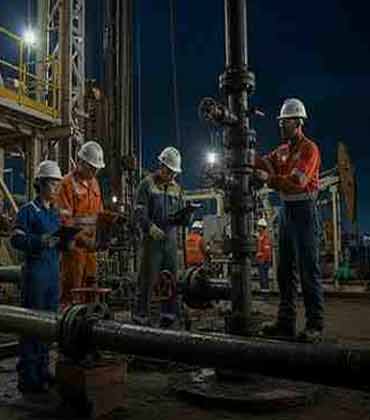Thank you for Subscribing to Energy Business Review Weekly Brief
AI is transforming the world, but at what cost? As machine learning models become more powerful, their energy demands rise, sparking concerns about sustainability. Is it possible to shape the future of AI without depleting the planet's resources? Crusoe Energy Systems shows that it is. Crusoe Energy Systems is the industry’s first vertically integrated, purpose-built AI cloud platform, redefining AI cloud infrastructure. Recognized as the “gold standard” for its reliability and performance in developing, training, and deploying AI models, the platform is powered by clean, renewable energy, aligning the future of computing with climate sustainability. Crusoe Energy Systems lowers emissions while delivering cost-effective computing power by optimizing energy use and reducing reliance on traditional power grids. The technical specifications of Crusoe Energy Systems’ AI cloud highlight its commitment to high performance. The company utilizes NVIDIA H200, H100 SXM, A100 SXM GPU instances, and NVIDIA Quantum InfiniBand networking to accelerate distributed training on clusters ranging from 8 to over 8,000 GPUs. Crusoe Energy Systems employs NVIDIA H200, H100, L40S, A100, and A40 GPUs for scalable inference, enabling 20B+ parameter model inference on a single card. These powerful resources help AI researchers and developers tackle complex challenges and push the boundaries of innovation.
Data-Driven Energy Consulting 2025
Well-versed in the nuances of energy infrastructures and markets, Legend Energy Advisors (Legend) provides critical insights leading to significant improvements in optimizing energy procurement and driving cost savings to maximize efficiency. Organizations seeking to most effectively navigate the evolving energy landscape should collaborate with a trusted partner with a breadth of knowledge and experience. Legend leverages its immense power infrastructure experience and market intelligence ato deliver comprehensive advisory services that empower businesses with a solid energy procurement strategy. As a leading energy consulting company, Legend provides real-time data and cutting-edge technologies to offer high-end advisory and data services. This unique approach helps clients increase efficiency while lowering their natural resource intensity. “The genesis of our name comes from the legend on a map. Until you figure out where you are, you cannot figure out where you’re going,” says Dan Crosby, founder and CEO. “Our priority is to educate the customers on different market structures so they can purchase and utilize energy more strategically.” Customers are often uninformed of their true energy cost and market trends. Legend addresses this challenge by offering unparalleled visibility and transparency into its pricing structures and market mechanisms. Its real-time data insights enable clients to make informed decisions to lower costs and mitigate risks. Legend works closely with customers to inform them about the current trends in the energy market and provide unique strategies that may not have been considered with a traditional procurement model. Every interaction with the client follows a multifaceted approach tailored to individual needs. Unlike competitors who concentrate on a single aspect of energy purchase, Legend’s method aligns with their clients’ objectives. The company delivers a broad spectrum of services to improve an organization’s energy ecosystem and sustainability goals, whether it’s focusing on energy procurement, infrastructure enhancement or real-time analytics. Through the LegendAnalytics® platform, customers will benefit from machine learning and proprietary AI technology. These tools create advanced analytics algorithms and predictive modeling for clients to manage their market interactions and enhance operational efficiency.
Oilfield Transportation and Pumping Service 2025
In the heart of northern Alberta's oil fields, trucks bearing the FluidPRO logo are a common sight. A transportation and oilfield services company, FluidPRO has become synonymous with service excellence in an industry where quality of work defines reputation. Its journey began in 2010 when owner Chad McFarland purchased his first truck to provide fluid transportation services. He gradually expanded the fleet, establishing FluidPRO as a highly sought-after oilfield service provider on a powerful promise – service excellence. Today, with a fleet of 110 trucks, 250 pieces of equipment and a team of over 170 employees servicing multiple locations across Alberta, British Columbia, and North Dakota, FluidPRO thrives on the same foundational promise. State-of-the-art equipment and skilled professionals place FluidPRO miles ahead of the competition in a market crowded with companies specializing in fluid hauling and pumping services. “Our competitive edge lies in an unwavering belief that success is forged through a symbiotic integration of people, equipment, safety, location and active community involvement,” says Eric Sundstrom, project manager. FluidPRO operates as a one-stop shop for fluid hauling, vac units and pressure pumping services, relieving clients from the hassle of relying on a third-party for different requirements. Mobile filter units and H2S scrubbers are also offered for rent as a value-added service. While the commitment to client satisfaction remains a top priority at FluidPRO, safety is given equal importance. A comprehensive health, safety and environment plan is in place to ensure employee well-being. Drivers undergo rigorous training and adhere to the highest industry standards, guaranteeing secure cargo transfer, be it well-site deliveries or chemical transportation. A representative is always available to support drivers, providing around-the-clock field supervision to swiftly address any concerns or timeline adjustments.
Municipal Solid Waste into Sustainable Fuel 2025
Human beings produce vast amounts of garbage on a daily basis. For years, the conventional method of dealing with municipal solid waste has been to transport it to landfills. However, landfills present numerous issues—they fill up quickly, require significant space, contaminate water and soil, and emit methane, a potent greenhouse gas. In addition, a significant amount of the waste remains stagnant for centuries, posing long-term environmental challenges. But what if we could use this waste as a resource? For instance, the organic fraction of waste could be separated and transformed into biofuel, coal replacement, Renewable Natural Gas (RNG), a soil enrichment or building materials? However, a substantial portion of this, around 50 to 60 percent, still ends up in landfills. Merely targeting the food waste fraction overlooks valuable digestible materials that could contribute to methane production in landfills over time and exacerbate the existing environmental issues associated with traditional waste disposal methods. As a result, it is crucial to develop advanced waste-to-energy technologies to effectively reduce the amount of municipal solid waste ending up in landfills and minimize the environmental impact. Enter WastAway, a pioneering green technology company that has developed innovative solutions to transform municipal solid waste into a safe, inert, and sterile carbon-rich sustainable engineered fuel called SE3™. It is homogeneous, pathogen-free and odor-free. Its renewable – negative carbon footprint – products include a soil enrichment additive; a proven, high-BTU coal replacement fuel for cement kilns, power plants, steel mills, pulp mills and other solid fuel users; biofuels through gasification and pyrolysis; renewable natural gas (RNG) through anaerobic digestion and building materials through extrusion processes. “We take municipal solid waste as our initial feedstock, offering a solution for those seeking alternatives to landfills. Our technology stands as one of the few in the world capable of legitimately diverting 85 percent of waste from a typical waste stream into valuable and beneficial products,” said Mark Brown, CEO of WastAway. The process begins with the extraction of municipal solid waste from curb side collection trucks. This involves sorting waste that has already undergone segregation by end-users in recycling programs. In regions lacking such programs, it handles the collected waste stream from street-side bins. The initial step in its operation is mixed recovery facilities (MRF), which entails extracting recyclables like ferrous metals, aluminum, non-ferrous metals, and polyethylene terephthalate (PET) plastics. These materials are then directed to local recycling centers or industries with corresponding markets.
CXO INSIGHTS

Unlocking A Clean Energy Future
Bill Quinlan, President of Transmission and Offshore Wind Projects, Eversource Energy

Building an HR Department for Maximum Impact
Charlie Hoock, President - Energy Services, NAES Corporation

Emerging Energy Industry: Perks and Pitfalls
Donell Banks, Senior Advisor, Southern Nuclear

A Vision for Renewable Energy Innovation
Heather Patti, Senior Associate at Montrose Environmental Group, Inc.

The Power of Waste - Maximizing its potential through innovative fuel cell technology
Ivor Castelino, Managing Director, Waste to Energy, Bloom Energy
IN FOCUS
Key Strategies for Effective Energy Procurement
An effective energy procurement strategy is vital for managing costs, mitigating market risks, and optimizing energy usage.
Navigating the Benefits of Oil and Gas Industry
The oil and gas sector is one of the world's most valuable sectors in terms of dollars.
EDITORIAL
How Innovation and Sustainability Are Transforming Oil and Gas
The global shift toward decarbonization and sustainable energy is not just a challenge for oil and gas service providers; it is an opportunity to evolve. Companies are tapping into AI to make drilling smarter and more precise, rolling out carbon capture solutions to cut emissions and ramping up automation to boost efficiency and safety. These innovations are transforming the industry, making operations more efficient, environmentally responsible, and cost-effective. Driving this transformation is digitalization, now the biggest game-changer in the sector. Technologies like AI, internet of things (IoT) and big data analytics have become widespread, changing everything from exploration to production and improving safety and efficiency. For instance, many companies are embedding sensors in equipment to collect real-time data, helping them predict failures before they happen, prevent costly downtime and save millions in repairs. Automation is also playing a crucial role in reducing human intervention in high-risk environments. The increasing use of autonomous drilling rigs, remotely operated vehicles (ROVs) and drones is optimizing workflows while strengthening safety measures. These tools are becoming indispensable in modern oil and gas operations, allowing companies to improve precision, reduce operational risks and enhance productivity. The shift toward digitalization is also closely tied to the industry’s commitment to environmental responsibility. As climate change concerns grow, oil and gas companies are prioritizing efforts to curb carbon emissions, improve energy efficiency and integrate renewable energy sources alongside conventional operations. Sustainability has become a key driver of innovation, pushing companies to develop cleaner, more efficient solutions to meet both regulatory requirements and market expectations. Through these efforts to balance operational efficiency with environmental responsibility, organizations are transforming their business models to meet regulatory pressures and offer cleaner energy solutions. Success in this evolving landscape depends on those who embrace innovation and lead the way in sustainable practices, shaping the next era of energy solutions. The edition also features the expert perspectives of Doug Kilmer, Vice President, Resource Management, Renewables Delivery Team at TRC Companies, Inc and Enoch Charles, Information Technology - Smart Grid Transport Manager, CenterPoint Energy. These esteemed individuals share their invaluable insights regarding the developments and challenges within the sector and possible solutions.











